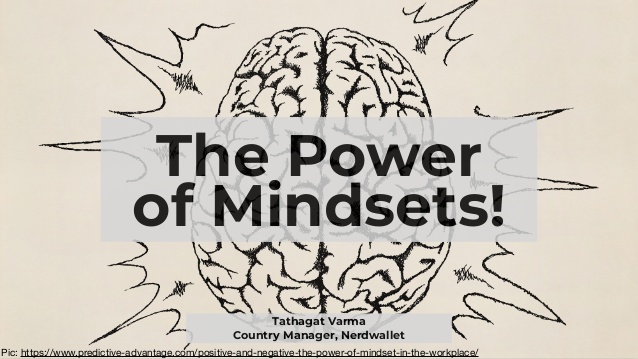Ratan Tata said, “None can destroy iron, but its own rust can. Likewise, none can destroy a man, but its own mindset can.”
Our actions are guided by our way of thinking and opinions. It is interesting to see people in the same circumstances behave differently. Boss throws a tantrum at the team for missing its target. It is interesting to see how members of the team deal with the reactions of the boss. Someone goes defensive explaining that no stone was left unturned, the targets were unrealistic and challenges were unforeseen. Another person keeps the past aside and comes up with ideas about the future. There could be someone else who goes on an emotional trip responding to the boss’ frustration. Each of these examples reflects the mindset of the respective individual.
Align your priorities!
The way of thinking and deeper beliefs make us respond to a situation differently. Not many leadership development programmes focus on helping the leaders understand their mindset and appreciate why they do what they do.
Moreover, every organisation has its context and every team within it has its unique context as well. Hence, the leaders for each team need to behave in the way the context demands. It is easier said than done. For example, an organisation might have a stated ambition of growing its revenues by increasing its scale of operation. So, the leader needs to exhibit an execution mindset so that one is focused on the goals, processes, customers and metrics. Other priorities such as innovation, diversification, sustainability practices, long term thinking become less important.
Challenge the status quo!
Each business faces a set of known situations, some are encouraging while some are challenging, such as customer complaints, employee performance issues, price wars by competition, the arrival of disruptive ideas, new opportunities in the market and many more. Leaders deal with each of these multiple times in their career and develop a certain style of dealing with them over time. Based on the results they get each time, they tend to develop their ways which become their muscle memory.
Secondly, leaders know that they must have a strong conviction in what they say and do. They consciously exhibit sure-footedness in their actions. This belief leads them to act quickly from their muscle memory every time they face a situation similar to what they have faced in the past. This builds blind spots for their leadership practices and cannot change their mindset if the context demands a different style.
Leaders must take efforts to understand this reality and be conscious of the fact that they could be prisoners of their old habits. They need to unshackle themselves and consciously reflect upon situations, explore new ideas and ask people around if there is a different way. They need to tell themselves that leaders are not meant to be omniscient. Seeking opinions from others, copying best practices from other businesses and admitting the fact that they do not have an answer do not imply incompetence or vulnerability.
Read also: The ideas we did not learn at our B-school
Get hands-on!
Leaders must get hands-on in a few tasks along with others in the team. This allows them to interact with their team members closely, appreciate ground realities better, help to break silos which may be getting raised within their organisation with any deliberate attempt. Leaders can earn their stripes when their people can know him or her as a person from close quarters, interact and work together. Some organisations have formal platforms such as open houses, town halls, floor walks, market visits, focus group discussions and CEO clubs to facilitate close interactions.
The idea is to help the leaders keep their ears and minds close to the ground and coach them to adapt to the emerging realities better.
Read also: Captivate your audience
Ref:
https://hbr.org/2020/01/to-be-a-great-leader-you-need-the-right-mindset?ab=hero-subleft-1
https://www.inc.com/young-entrepreneur-council/12-ways-to-shift-your-mindset-and-embrace-change.html


